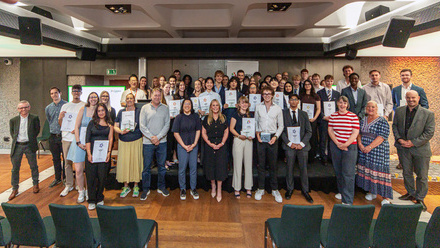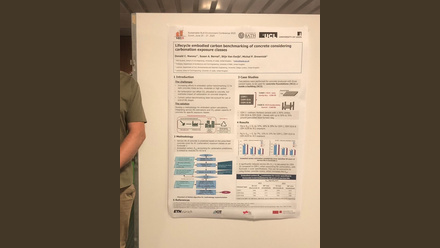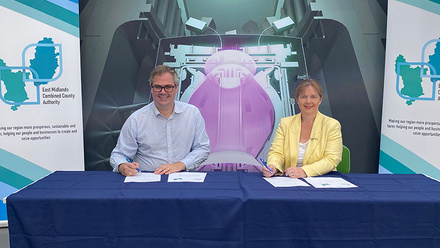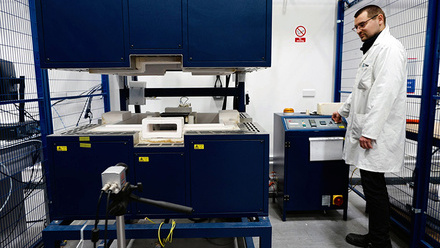The talent gap – critical skills for critical materials
IOM3 consulted stakeholders on the critical minerals value chain skills gaps. Head of Policy Rachel Stonehouse details the outputs submitted to UK Government.

Critical minerals, which have been identified for their importance to the UK economy and the risks associated with their supply, are essential raw materials for a range of industries and technologies from automotive, defence and aerospace, to medical devices and renewable energy infrastructure.
Responsible and resilient sourcing and management of these materials underpins the UK economy and the transition to a low-carbon, resilient and resource-efficient society.
To support the launch of the UK Critical Minerals Strategy, the British Geological Survey has defined a cohort of materials with high criticality for the UK. This list provides necessary focus and forms an important piece of a bigger picture.
As the criticality assessment is dynamic – critical minerals are rarely relied on as individual elements but rather as combinations processed into engineered materials, and some are produced as co- or by-products – they are intrinsically linked with the wider materials, minerals and mining landscape.
Demand for these minerals is forecast to increase significantly, driven by global population growth and development, the rate of technological change, and the need to mitigate and adapt to climate change, including moving to cleaner energy. The World Bank predicts production of some minerals such as lithium, graphite and cobalt could see increases in demand of up to 500% by 2050. This exceeds the rate at which new primary and secondary sources are currently being developed.
Shortages are likely to be exacerbated by fierce competition between countries and industries, with usage conflicts within and between sectors. This has been brought into even greater focus with the changing political landscape and ongoing supply chain disruptions, including from the impacts of climate change, the COVID-19 pandemic and port strikes.
Countries worldwide are recognising the strategic importance of materials and are taking action to secure their supplies, such as through the US Inflation Reduction Act, the EU’s Critical Raw Materials Act and Chinese subsidies for domestic production.
Securing the skills
Meeting the demand and ensuring responsible and resilient sourcing and management of these materials will only be possible if we have enough people with the necessary skills and access to the right training.
Yet while an increase in the workforce is required, there is simultaneously a decline in the availability of skilled people. Many professionals are reaching retirement age and insufficient new talent is entering and developing through the industry to fill the positions. This can be seen in the age demographic of qualified mining-related professionals in the UK – in 2022, of the 1,237 mining and mineral processing engineers registered with the Engineering Council via IOM3, 80% were over the age of 50, with 39% over the age of 66.
With other countries facing similar shortages and moving to secure their supplies, the UK will be competing in an increasingly challenging and competitive labour market.
Recognising this significant and important issue, the UK Critical Minerals Strategy sets an ambition to 'review the UK’s skills, education and training along the critical minerals value chain and define a critical minerals skills blueprint, recognising the full breadth of skills we need'.
To support government in delivering this objective, IOM3 convened and consulted over 50 key stakeholders from across industry, associations and academia to undertake a preliminary assessment of the current skills landscape and gain a qualitative understanding of the skills gaps and challenges.
The talent gap: critical skills for critical materials report confirms that a lack of access to skilled workers is a significant and growing risk facing the sector and UK economy. There is a shortage of key professionals, including exploration geologists, mining engineers, mineral planners and mineral processors. While, across the value chain, metallurgical skills in all their guises were identified by stakeholders as critical and in short supply.
The talent pipeline is unlikely to meet future demand for skilled individuals across the value chain. Enrolment in relevant education and training is decreasing in the UK and other countries such as Australia and the US. This, in turn, leads to a reduction in supply and the cancelling of education and training courses.
The sector has benefited from skilled professionals exiting the coal industry in the UK, but this suppressed demand for new entrants as companies found it easier to recruit trained former coal mining professionals than to sponsor new students and apprentices. The UK is reaching the end of this legacy that has largely sustained the industry to date.
The value chain faces significant issues with perception and awareness, and therefore the attraction of talented individuals. Exploration, extraction and end-of-life recovery activities are typically perceived negatively, as environmentally damaging, risky (both in terms of stability and safety), and with poor working environments. Many roles in the midstream in particular struggle with awareness, visibility and a lack of understanding of the career options available.
Updating and improving the perception of the value chain, in line with its role in underpinning the low-carbon transition, and raising awareness of the career opportunities available will be key to attracting skilled professionals and sustaining the industry.
Skill-sets are changing, reflecting the evolving needs of the sector, with advancements in technology and a greater focus on data skills and environmental, social and governance standards. Greater integration of skills, combining different skill-sets and understanding different aspects of the value chain is required, together with a greater provision for continuing professional development at a postgraduate level to bridge the gap from education to workplace.
A lack of diversity in the minerals value chain has also been a long-standing issue. In the occupation census for 2021 in England and Wales, 7,220 people were counted as ‘mining and quarry workers and related operatives’. Men made up 96.2% and women just 3.8%, compared with 52% and 48% across the working population. Improving equity, diversity and inclusion is both necessary and brings wide-ranging benefits.
The extent and growth rate of the skills gaps will require short-, medium- and long-term action. This will require involvement across the ecosystem and all stakeholders to ensure sustainable impacts for both the existing and future workforce.
The UK has numerous strengths across the value chain and related skills, both domestically and overseas, that provide a strong foundation to build upon. These include a rich history of mineral and mining expertise; research, development and innovation excellence; a strong higher education system; high environmental, social and governance standards; and globally significant investors, markets, policy influence, consultancies, industry associations and service providers.
The unique strengths and comparative advantage of the UK and how these can be leveraged must be considered, as well as what will be required for national and economic security. This should be translated into the skills requirements and targeted measures employed to ensure a skilled and sustainable workforce. There are a number of opportunities for the UK including:
- UK deposits – providing domestic production and increasing resilience.
- Midstream – helping to secure supplies, improve traceability and support the use of secondary resources.
- Circular economy – maintaining and maximising the value of materials and minerals, and harnessing the opportunity of secondary resources.
To exploit these opportunities, the skills-related gaps and challenges will need to be addressed, and appropriate education and training made available to ensure an available and equipped current and future workforce.
The report recommends a quantitative assessment is undertaken to build on the qualitative findings to understand the future workforce capability needs, map competences, and conduct a gap analysis on education and training provision and provider capacity.
This combined with implementing measures to tackle the challenges outlined will enable government, employers, education providers, relevant professional bodies and other stakeholders to put in place the steps necessary to address the gaps and secure a high-quality and sustainable workforce and industry.







